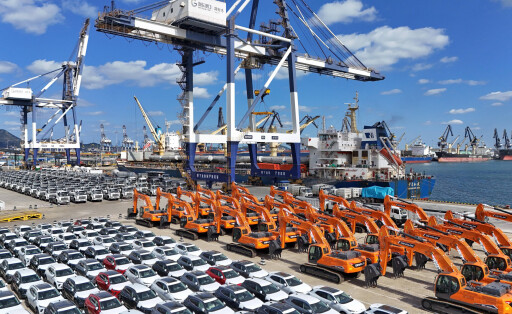The Made in China 2025 strategy is a roadmap with which the People's Republic of China intends to modernize its country's economy. The editorial team of China.Table has all the news on the topic. What is Made in China 2025 (MIC25)? Made in China 2025 is a long-term strategy aimed at modernizing and upgrading the economy of the People's Republic of China. The country wants to move away from the image of being just the world's workbench and aims to become a technology leader. The plan sets targets for ten key industries, some of which extend to the year 2049 – the centenary of the People's Republic of China. By then, the country wants to be the world's leading economy.MIC25 aims for the People's Republic to be the world's leading manufacturer of materials in the telecommunications, railroad and power supply sectors by 2025. In the sectors of robotics, high-end automation and vehicles with alternative drive systems (electromobility), the country wants to be at least second or third place. Made in China 2025: Goals The Made in China 2025 plan identifies nine strategic tasks. These tasks apply to each individual sector. With these goals, MIC25 aims to upgrade the economy of the People's Republic: Made in China 2025 key industries China wants to focus on sustainable growth. Innovations should lead the industry to the top of the world. Education, science and digitalization therefore play a major role. On this basis, a total of ten key industries have been defined in the MIC25 strategy: China's global trade: One Belt, One Road Made in China 2025 primarily aims to ensure that the People's Republic becomes the global market leader in selected industries. To achieve this, trade and exports must also be strengthened. To this end, the government has bundled measures to expand the intercontinental trade network under the name One Belt, One Road. The aim is to modernize old trade routes. The project is intended to be reminiscent of the former Silk Road, distinguishing between the more northerly land routes (Silk Road Economic Belt) and the more southerly sea routes (Maritime Silk Road). To this end, the People's Republic is expanding ports in several countries, building transport hubs and constructing new transport routes to provide greater access to the respective hinterland. The One Belt, One Road project affects around 60% of the world's population. Around 40% of global trade runs along the Silk Road. China's master plan: Five initiatives for 2025 Despite all the boosts to exports, the master plan behind MIC25 is, of course, to increase value creation at home. The People's Republic is to become an innovative high-tech producer. Five initiatives as part of Made in China 2025 are intended to drive this goal forward. What does Made in China 2025 mean for Germany Many sectors in which Germany is one of the global market leaders are also to be promoted in the MIC25 strategy. If the plan works out, the People's Republic would no longer just score points for low costs, but would mature into a competitor on an equal technical footing. Chinese companies such as Tencent and Huawei have long been among the world leaders, and Germany is pursuing a similar plan. It is called Industry 4.0 and served as a template for the MIC25 plan. However, China is investing much larger sums. The government is investing the equivalent of three billion euros in the development of intelligent manufacturing. The semiconductor industry is being provided with twenty billion. Made in China 2025 as an opportunity for Germany Despite these investments, Germany naturally still has a big head start in the technologies mentioned. Companies could therefore benefit from China's rise. This is because companies in the People's Republic need trading partners and suppliers. Germany could thus become a partner in the MIC25 strategy, but Made in China 2025 is also open to criticism: China is already a leader in the field of facial recognition and artificial intelligence (AI) in 2021. The country has used high-tech innovations in this field to build a huge surveillance state. Questionable business practices Furthermore, the Chinese government does not shy away from business practices that are viewed rather critically in Western countries. On the one hand, Chinese companies have brought an enormous amount of know-how into the country through takeovers and investments. On the other hand, there is no level playing field in the People's Republic for companies from Germany, the USA or Europe. Contracts are awarded without invitations to tender and foreign companies are kept out of the market. Many Chinese companies – especially in the solar and wind turbine construction sector – can offer their products on the global market at dumping prices thanks to generous subsidies. Problems with Made in China 2025 From the Chinese government's point of view, however, such measures are necessary. The enormous subsidies for the semiconductor industry are due to the fact that Chinese suppliers are still seven to ten years behind. Not everything is going as planned in robotics either. Chinese manufacturers were supposed to be able to meet fifty percent of their own demand in 2020 (seventy percent in 2025). In 2021, not everything is going according to plan when it comes to electric cars either: the world's largest car market has strict electric quotas and many partnerships with European manufacturers. The ambitious manufacturer Byton still had to lay off hundreds of employees and only narrowly avoided bankruptcy thanks to new investors. You can find out how things are progressing with the Made in China 2025 plans in the news and analysis from the China.table editorial team.

China overtakes European markets: “Made in China 2025” puts German companies under pressure
In a China.Table live briefing, Corinne Abele from GTAI and Oliver Wack from VDMA discussed the challenges and prospects of China’s industrial policy for German industry.
By Julia Fiedler
